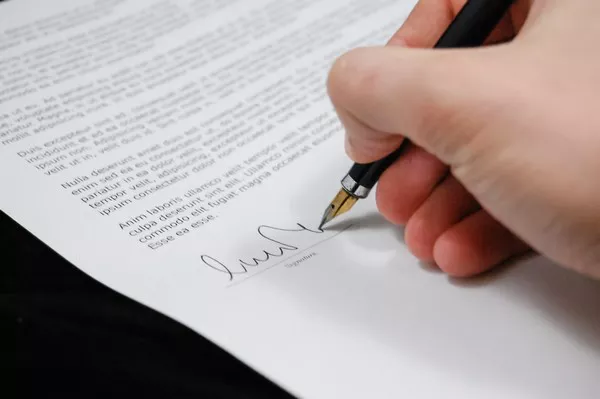Anxiety avoidance is a common coping mechanism that many individuals use to manage overwhelming or stressful feelings. Whether it manifests as avoiding certain situations, places, people, or even emotions, anxiety avoidance can provide temporary relief. However, over time, it can reinforce anxiety, making it even harder to confront fears and anxieties. If you’re looking to break free from anxiety avoidance, it requires a thoughtful, patient approach that involves confronting fears, building resilience, and gradually reintroducing anxiety-inducing experiences. In this article, we will explore strategies for breaking anxiety avoidance, how to gradually face fears, and tips for cultivating emotional resilience to manage anxiety more effectively.
Understanding Anxiety Avoidance
Anxiety avoidance is a defense mechanism where individuals choose to avoid situations or experiences that trigger feelings of anxiety. While avoidance might provide short-term relief, it prevents individuals from learning how to cope with their anxiety in healthy ways. Over time, avoidance can reinforce the belief that the feared situation is truly dangerous or unmanageable, which only increases anxiety in the long term.
For example, someone who experiences anxiety in social situations may start avoiding social gatherings altogether. While avoiding these situations may feel like a relief in the moment, it only strengthens the anxiety over time and reinforces the avoidance pattern. As a result, anxiety may escalate, and the person may become more isolated and avoidant.
Breaking the cycle of anxiety avoidance is essential for managing anxiety in the long term. It requires shifting the mindset, developing coping strategies, and gradually confronting feared situations. While this can be challenging, it is entirely possible with dedication and support.
The Cycle of Avoidance and Anxiety
The cycle of avoidance and anxiety typically begins with the identification of a situation or event that triggers anxiety. In response to this discomfort, the individual avoids the trigger to reduce their anxiety. However, this avoidance behavior comes with unintended consequences:
Temporary Relief: Avoidance offers immediate relief from the anxious feelings, which can reinforce the behavior. The person believes that avoiding the situation is the best way to manage their anxiety.
Increased Anxiety Over Time: The more an individual avoids a particular situation, the more their anxiety increases. This happens because avoidance prevents the person from learning that they can tolerate the discomfort and that the situation is often not as threatening as they believe.
Avoidance Generalization: Over time, avoidance behaviors can spread to other areas of life. For example, a person who avoids social situations may start avoiding work, public spaces, or even interactions with friends and family. This broadens the scope of anxiety, making it harder to break the avoidance cycle.
Reinforcement of Negative Beliefs: Avoidance strengthens the individual’s belief that they are incapable of handling anxiety-provoking situations. This reinforces the idea that they should continue to avoid situations rather than face them and develop coping mechanisms.
How to Break Anxiety Avoidance
Breaking anxiety avoidance requires a combination of self-awareness, gradual exposure, and new coping strategies. Below are several strategies to help overcome avoidance behaviors and learn to manage anxiety more effectively:
1. Acknowledge the Anxiety and Its Triggers
The first step in breaking anxiety avoidance is to acknowledge that you are experiencing anxiety and identify the specific triggers. Anxiety can often feel overwhelming or abstract, making it difficult to pinpoint exactly what is causing the distress. By identifying the specific situations, thoughts, or emotions that trigger your anxiety, you can begin to address them directly.
Take the time to reflect on the following:
- What situations cause you the most anxiety?
- Are there any recurring patterns or triggers that seem to bring on your anxiety?
- How do you typically react to these situations (e.g., avoiding, withdrawing, or trying to control the situation)?
Understanding the nature of your anxiety can help you recognize when avoidance behaviors are being triggered and take proactive steps to challenge them.
2. Gradual Exposure to Anxiety-Inducing Situations
One of the most effective ways to break anxiety avoidance is through a process called gradual exposure. Gradual exposure involves slowly and systematically confronting the situations that cause anxiety. Rather than avoiding these situations altogether, you gradually expose yourself to them in a controlled and manageable way.
Here’s how you can implement gradual exposure:
Start small: Begin by exposing yourself to situations that cause mild anxiety. For example, if you feel anxious in social situations, you might start by attending a small gathering of close friends before gradually attending larger social events.
Increase exposure over time: As you become more comfortable with less anxiety-inducing situations, increase the intensity or duration of your exposure. This helps desensitize you to the anxiety-triggering situations and allows you to build confidence in your ability to cope.
Focus on the process, not the outcome: The goal of gradual exposure is not necessarily to succeed in every situation, but to practice facing anxiety without resorting to avoidance. Each time you confront a fear, you learn more about your ability to manage discomfort.
3. Practice Mindfulness and Grounding Techniques
Mindfulness is a powerful tool that can help you manage anxiety in the moment and reduce the need for avoidance. Mindfulness involves staying present and fully engaged with your thoughts, feelings, and surroundings. By practicing mindfulness, you can better tolerate anxiety without feeling compelled to avoid it.
Some helpful mindfulness practices include:
Deep breathing: Focusing on slow, deep breaths can help calm the nervous system and reduce feelings of anxiety. Try inhaling for a count of four, holding the breath for four, and exhaling for a count of four.
Body scans: Performing a body scan involves paying attention to physical sensations in your body, starting from your toes and working up to your head. This can help ground you and shift your focus away from anxious thoughts.
Guided meditation: Listening to guided meditation can help you practice mindfulness and reduce anxiety. Many apps and online resources offer free meditation sessions that you can follow along with.
By regularly practicing mindfulness and grounding techniques, you can learn to stay present during anxiety-provoking situations and reduce the impulse to avoid them.
4. Challenge Negative Thought Patterns
Anxiety often stems from distorted thinking patterns, such as catastrophizing (expecting the worst possible outcome) or overgeneralizing (believing that one negative experience means that all future experiences will be the same). These thought patterns can fuel avoidance behaviors and make anxiety feel more intense than it actually is.
To break free from anxiety avoidance, challenge negative thought patterns by asking yourself the following questions:
Is this thought based on evidence?: Examine whether your anxious thoughts are supported by facts. Are you exaggerating the potential risks or imagining worst-case scenarios?
What is the likelihood of the feared outcome?: Consider how likely it is that the worst possible scenario will occur. Remind yourself of past situations where things turned out better than expected.
What are the benefits of facing this fear?: Think about how facing your anxiety could help you grow and build confidence. How might you feel afterward if you confront the fear rather than avoid it?
By challenging irrational thoughts and reframing them in a more balanced way, you can reduce anxiety and build resilience against future triggers.
5. Develop Healthy Coping Mechanisms
In order to break anxiety avoidance, it’s essential to develop healthy coping mechanisms that allow you to manage anxiety in constructive ways. Avoiding anxiety-provoking situations may provide short-term relief, but it doesn’t help you build the skills needed to cope with anxiety in the long term.
Healthy coping strategies include:
Exercise: Regular physical activity helps reduce stress, boosts mood, and promotes relaxation.
Social support: Talking to friends, family, or a therapist can help you process your anxiety and feel supported during difficult moments.
Creative outlets: Engaging in creative activities such as art, writing, or music can provide a productive way to express emotions and manage stress.
By developing healthy coping mechanisms, you will be better equipped to face anxiety head-on and resist the urge to avoid triggering situations.
6. Seek Professional Help If Needed
Breaking anxiety avoidance can be challenging, especially if you have been using avoidance as a coping mechanism for a long time. If you find it difficult to overcome anxiety on your own, seeking professional help may be necessary. A therapist or counselor can help you explore the root causes of your anxiety, provide guidance on gradual exposure, and teach you effective coping strategies.
Therapeutic approaches such as Cognitive Behavioral Therapy (CBT) or Exposure Therapy have been shown to be effective in treating anxiety and breaking avoidance patterns. Working with a trained professional can help you develop a personalized plan for managing your anxiety and confronting avoidance behaviors.
Conclusion
Breaking anxiety avoidance is not an easy task, but it is entirely possible with dedication, self-awareness, and the right strategies. By gradually confronting anxiety-provoking situations, practicing mindfulness, challenging negative thoughts, and developing healthy coping mechanisms, you can break the cycle of avoidance and build resilience in the face of anxiety. Remember that progress takes time, and it’s important to be patient with yourself as you work through your fears. With consistent effort and the right support, you can overcome anxiety avoidance and learn to live more freely and confidently.
Related Topics:





















